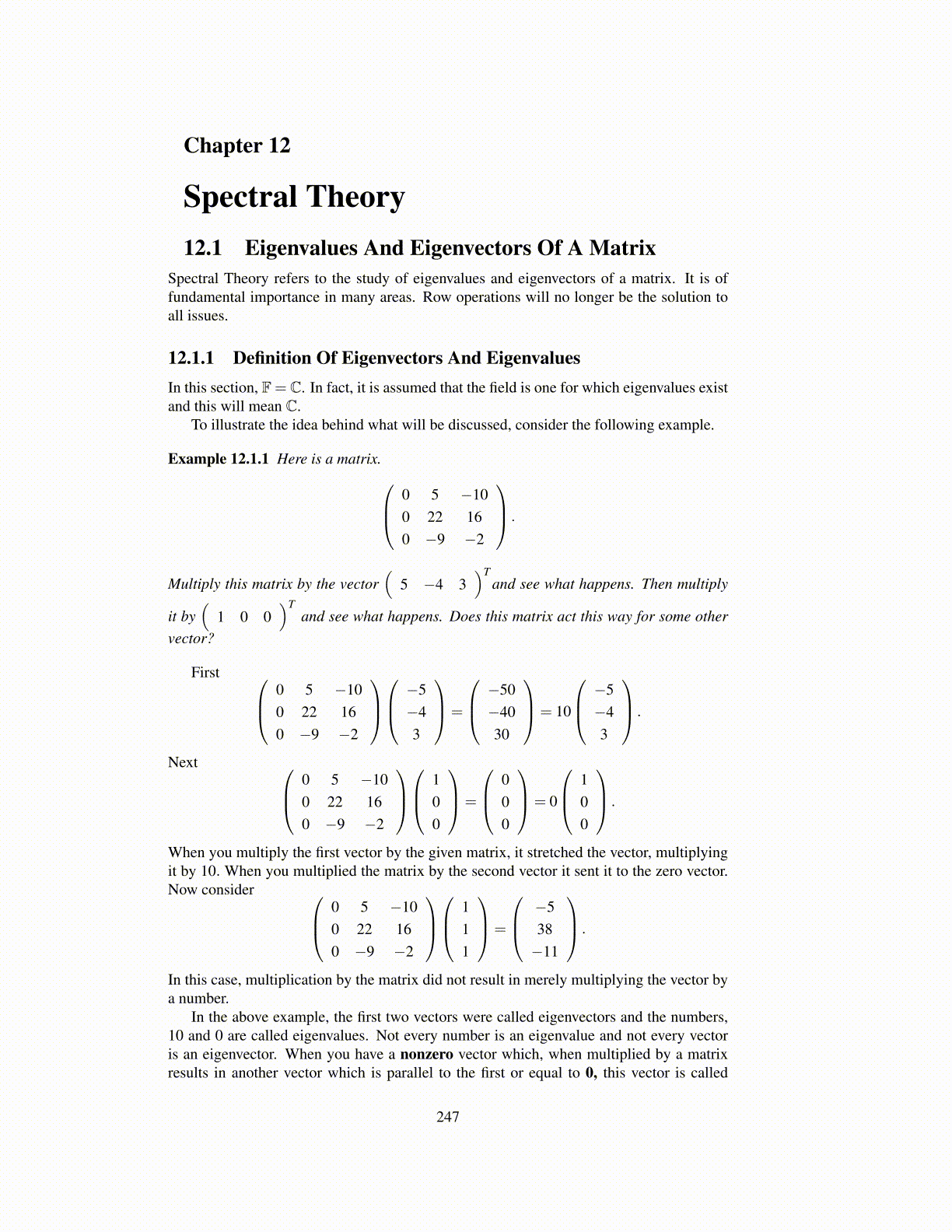
Chapter 12
Spectral Theory12.1 Eigenvalues And Eigenvectors Of A Matrix
Spectral Theory refers to the study of eigenvalues and eigenvectors of a matrix. It is offundamental importance in many areas. Row operations will no longer be the solution toall issues.
12.1.1 Definition Of Eigenvectors And EigenvaluesIn this section, F= C. In fact, it is assumed that the field is one for which eigenvalues existand this will mean C.
To illustrate the idea behind what will be discussed, consider the following example.
Example 12.1.1 Here is a matrix. 0 5 −100 22 160 −9 −2
.
Multiply this matrix by the vector(
5 −4 3)T
and see what happens. Then multiply
it by(
1 0 0)T
and see what happens. Does this matrix act this way for some othervector?
First 0 5 −100 22 160 −9 −2
−5−43
=
−50−4030
= 10
−5−43
.
Next 0 5 −100 22 160 −9 −2
1
00
=
000
= 0
100
.
When you multiply the first vector by the given matrix, it stretched the vector, multiplyingit by 10. When you multiplied the matrix by the second vector it sent it to the zero vector.Now consider 0 5 −10
0 22 160 −9 −2
1
11
=
−538−11
.
In this case, multiplication by the matrix did not result in merely multiplying the vector bya number.
In the above example, the first two vectors were called eigenvectors and the numbers,10 and 0 are called eigenvalues. Not every number is an eigenvalue and not every vectoris an eigenvector. When you have a nonzero vector which, when multiplied by a matrixresults in another vector which is parallel to the first or equal to 0, this vector is called
247